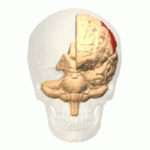News Versus Wisdom: Transient Versus Timeless
I had actually meant to post this item of possible interest to those of you who might be interested in Asian politics, demographic trends, capital markets, inevitable eastern world domination, Rare Earth Element export restrictions, exotic recipes, FOREX, and so forth many months ago, when I actually received it. It might have been critically important then -- but then again, as I do not read and comprehend any languages other than English, some German and a bit of urban Spanish (either written or spray painted on aging infrastructure), I hadn't any idea what it meant. If it was breaking news, then this post will be seem to be a waste to many of you. Or perhaps, for those of you who may be Braintenance or Sending Signals adherents, it might actually be incredibly thought-provoking.
Before deleting the correspondence, I thought, "What if the message contained in these curious characters is not breaking news, per se? What if it is wisdom?" I realized at that moment that news is time sensitive, and may have limited utility, whereas wisdom is timeless and has limitless utility. News is important, but transient... wisdom is always relevant. This is a very under-appreciated difference. It captures the very essence of why a wonderful book retains its appeal over centuries while yesterday's racing form, stock market tip, or last month's election forecast may be of such short-lived relevance. The original post follows:
---------------
This morning I received the following correspondence, and wanted to share it with my friends and colleagues immediately. If what this person claims is actually true, things could be much better than any of us had originally thought. I offer it here for your consideration. Please be at liberty to write me back with your thoughts on this very serious matter. Whatever it may be. I am hopeful that it will not translate to something socially inappropriate for my general audience:
p.s. It is occasionally considered "bad form" to send spam to people. But, technically speaking, this letter is merely information and an inquiry. Perplexingly, I do not know whether or not the forwarded correspondence is spam -- it may well be a formula for a cancer cure...then again, it could be an ad for cheap Cialis from a pharmacy in Mexico.
學習記憶法真的要那麼貴嗎?
現在您有更平民化的選擇!!
而且便宜絕對有好貨!!
保證國立大學的師資親自錄製
只賣1600元!!
完全無保留的教學
詳細圖文說明請按此
現在您有更平民化的選擇!!
而且便宜絕對有好貨!!
保證國立大學的師資親自錄製
只賣1600元!!
完全無保留的教學
詳細圖文說明請按此
--------------
Interestingly enough, the above message (I believe it was a response to a post on one of my blogs from some time ago), may or may not be of any significance or utility. It is actually irrelevant to this article.
The importance of this article is by no means dependent upon (or even related to the curious characters in the curious characters above. The importance of this article is that news becomes either stale or irrelevant quickly -- it has a very limited shelf-life. But wisdom, whenever it arrives, remains relevant forever. News is a report. Wisdom is a vastly applicable rule, born of an important observation.
Keep up with the news to remained informed and prepared...but pursue wisdom in order to become the owner of a greater mind. Wouldn't it be wonderful if the news were enriched with more wisdom? Wouldn't it be wonderful if those persons who reported the news [objectively and accurately], could end with an observation regarding the news item that represented some wisdom derived from the news?
Douglas E. Castle [http://aboutDouglasCastle.blogspot.com]

Tweet


 — This article was inspired by a piece written by
— This article was inspired by a piece written by 




